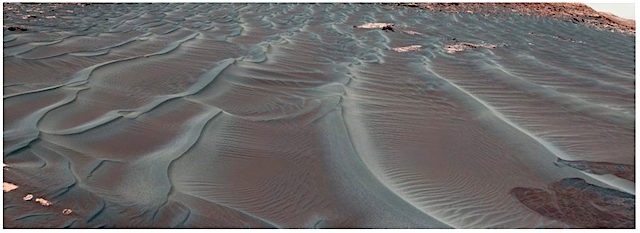 [Ed. note: The following is a guide to two recent special issues of the Journal of Geophysical Research; both collect papers reporting on studies of the Bagnold Dunes in Gale Crater. The guide complements the MSL report posted earlier here.]
[Ed. note: The following is a guide to two recent special issues of the Journal of Geophysical Research; both collect papers reporting on studies of the Bagnold Dunes in Gale Crater. The guide complements the MSL report posted earlier here.]
Dunes are arguably one of the simplest geologic systems there is — piles of sand blown around by wind — and they abound in the solar system. As such, they offer a unique opportunity to test our understanding of how simple sedimentary processes are affected by different environmental conditions.
Until recently, however, the study of extraterrestrial dunes was restricted to orbiter-based imagery and few martian ripple fields observed close-up by the Mars Exploration Rovers, Spirit and Opportunity. Between November 2015 and April 2017, the Mars Science Laboratory (MSL) Curiosity rover traversed, for the first time in humankind, an active dune field on another planet — the Bagnold Dunes of Gale crater.
Curiosity’s scientific campaign at the dunes was organized in two phases. Phase 1 occurred near the northern, trailing edge of the dune field during the low-wind season (southern fall/winter), while Phase 2 occurred near the southern edge of the dune field during the high-wind season (southern summer)… [More at links]








